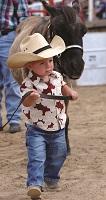
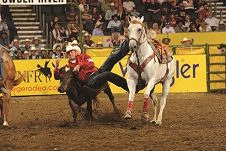
Nicole Rivera is in a unique position to observe the trends in equestrian events. As the events director at Kentucky Horse Park—home of numerous events, including the Olympic and World Equestrian Games-qualifying Rolex Kentucky Three-Day Event—Rivera has had a front-row seat to the equestrian world.
“It took a couple of years for people to figure out the balance and their budgets but horses are a way of life,” says Rivera. “People might be picking three or four key shows, and not showing at every event, but they are competing more. The hunter jumper has bounced back to levels we hadn’t seen since 2008. Breed shows are taking a bit longer, but they are on the way back as well.”
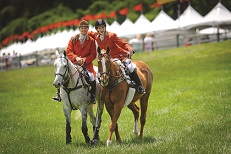
Americana 101
A distinctly American discipline, rodeo is another area of horse events, one rooted deeply in a passionate culture and showing no signs of letting up. The Professional Rodeo Cowboys Association (PRCA), the world’s largest rodeo sanctioning body, reported a fan base of 31 million in 2013: 5.5 million of those fans actually traveled to a PRCA rodeo in 2013, and 13.5 million watched a PRCA rodeo on TV.
What’s more, America’s rodeos are setting new attendance and participation records all the time.
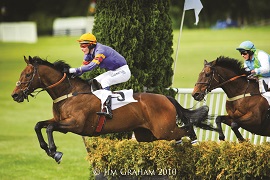 College Rodeo: the Sport’s Future
College Rodeo: the Sport’s Future
The College National Finals Rodeo (CNFR) in Casper, Wyoming, offers the perfect example of rodeo’s growth.
“The CNFR is coming up off of year 16, and the National Intercollegiate Rodeo Association (NIRA) has signed to be here through 2022,” says Aaron McCreight, CEO, Casper Area Convention and Visitors Bureau. “Rodeo is the state sport of Wyoming, and it should be here.”
Apparently, the fans agree. In 2014, the CNFR’s attendance was up 10 percent from the previous year’s record ticket sales, and attendance continues to grow. That, says McCreight, is due to a number of factors.
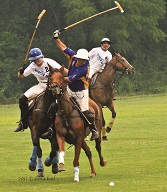
“It’s a testament to the community, the NIRA and the event itself. I was there on Tuesday, Thursday and Saturday nights, and every single performance was just enormous. There’s zero downtime. You can’t leave your seat for a second,” says McCreight.
NIRA commissioner Roger Walters adds, “We are delighted with the growth of college rodeo, through ticket sales, social media, local partnerships, and outstanding sponsors.”
Casper College is contributing to Casper’s rodeo tradition with a potential new college facility on the drawing board.
“Essentially, we have been working for 10-15 years to encourage our college leadership to purchase/build such a facility. We rely on our county's fairgrounds facilities for our rodeo team practices and the one yearly event. That staff and crew has been terrific for a long time and very supportive, but practice time is severely limited,” says Bill Landen, associate vice president and athletic director, Casper College. “We are in the process of raising money right now to make that arena happen on a new ranch property west of town that the college purchased a few months ago.”
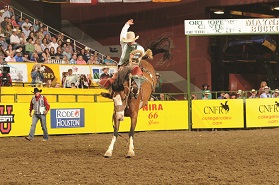
Building to Accommodate More Riders
Northeast of Casper is Gillette, Wyoming, another rodeo and equestrian landmark with an equine facility that has become so busy and successful, a second is in the works.
“Gillette’s CAM-PLEX facility is so popular that it’s become hard to get into. As a result, the town of Wright worked with Campbell County to build a smaller version of CAM-PLEX,” says Brandi Harlow, economic development coordinator, town of Wright.
The town conducted a feasibility study that demonstrated the demand for the facility. In fact, respondents indicated that they would be willing to drive several hours to get to a facility that is well-equipped to host rodeo and equine events. Once the results were in, the Southern Campbell County Agriculture Complex broke ground.
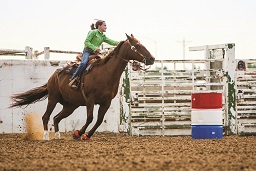
Both the CAM-PLEX and the future Ag Complex offer facilities for English and American equestrian disciplines as well as rodeo events. “With the current demand, both facilities will likely be busy,” says Mary Silvernell, executive director, Campbell County Convention & Visitors Bureau.
Smart Planning Helps Grow West Coast Rodeo
In Salinas, California, the California Rodeo Salinas is another popular event. With attendance up 2.5 percent in 2014, the 104th California Rodeo Salinas drew more than 50,000 people to the Salinas area over four days. A number of factors and smart planning tactics have contributed to that growth.
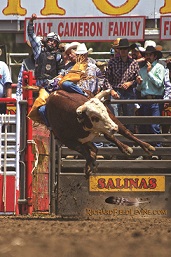
Keeping close to its roots while also updating its technology is another way the California Rodeo Salinas has maintained its popularity. “Tradition and technology are the keys,” says Linquist. “We have people who are always going to walk right up to the box office to buy tickets, and we also have people who will always buy online.”
Service, Accommodations Are Keys to Success
Exceptional service and expertise are shaping a new century of equestrian events in Nampa, Idaho, home of the hundred-year-old Snake River Stampede Rodeo. The Stampede rides at Ford Horse Park, where every horse and human competitor is treated like a special guest. A few of the keys to Ford Horse Park’s success are the unique accommodations. The facility offers a guest services team on hand 24/7 to fulfill any guest’s needs. Competitors receive Park-specific credit cards that allow them to charge whatever they need—from snacks to stalls—during the event and receive one itemized bill at the end.
Expertise is another of the Park’s aces. For example, they employ soil experts to create the perfect footing for each event and maintain a staff that has decades of experience supporting every need of national, high-profile events.
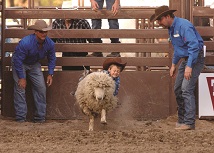
Lexington, Kentucky, has long been known as horse country. It would be impossible to cover every equine venue or event in the Bluegrass area, which in the past year include the 2014 Pony Festival, but one event that has captured the fascination of the region’s equestrians is the Road to the Horse.
Part education and part exhibition, Road to the Horse pairs elite horse experts with three-year-old untouched horses and, working against the clock, they begin building a relationship.
“It’s really something to see,” says John Pohl, director of sports and equine sales, Lexington Convention and Visitors Bureau. “The clock is ticking down, and these horses are bucking when the competitors walk into their pens. Ten minutes later, the horses are walking with their noses on their trainers’ shoulders. It’s my favorite weekend because I get to work and also enjoy every moment of the event.”
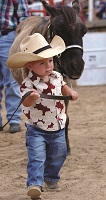 A Built-In Equestrian Community
A Built-In Equestrian Community
For Mid-Atlantic equestrians, Chester County, Pennsylvania, is a can’t-miss destination. For some, it’s the Devon Horse Show, the largest multi-breed horse show in the country. For others, it’s the Plantation Field International Horse Trials, or the Pennsylvania Polo Cup, celebrating 80 years in 2015. The list goes on.
Famous for its hunting tradition, including the renowned Radnor Hunt Races, its equestrian shows and events, and even its strong and picturesque horse and carriage culture, Chester County and its Brandywine Valley, are, quite simply, a paradise for horse lovers.
“We have a long and rich history of equestrian events here,” says Nina Kelly, director of marketing and communications, Chester County Conference and Visitors Bureau. “As a result, we have an equestrian community that’s very involved and helpful, including some the country’s best equine veterinarians.”
A Community Centerpiece, A College Leading the Charge
Another example of a rodeo that is a centerpiece of the community can be found in Miami, Oklahoma. Rodeo Miami is a two-day event that draws 13,000 visitors and continuously growing attendance records. The American Cowboys Rodeo Association, a regional rodeo organization, has named Rodeo Miami Best Rodeo of the Year for the past four years, a special distinction because it’s voted on by the top 20 participants in each event, making the winner the cowboys’ favorite rodeo.
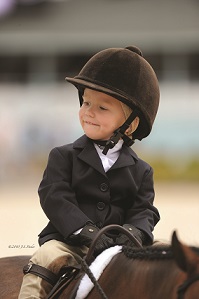
Northeastern Oklahoma A&M College is rounding out the community’s equine tradition with an equestrian team that is drawing major attention. One of the team members qualified for nationals last year, and the college is currently giving its own equestrian facility a series of upgrades.
“The college’s facility is smaller than the fairgrounds, but it will be excellent for smaller events,” says Davis “Together, these venues offer great options for people who are looking to keep their events in the Midwest.”
Raising the Next Generation
Florida not only has a strong, deep horse and cowboy culture, it is raising the next generation of equestrians as well. Ocala is a great example.
“There is a new, younger generation that is participating in equestrian events,” says Corry Locke, sports marketing specialist, Ocala/Marion County Visitors and Convention Bureau. “We find that there is a surge in jumping and dressage events with the likes of Horses in the Sun (HITS) and Live Oak International, which are always popular and grow each year.”
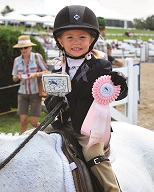
Community Support that Makes the Difference
Growing participation is a good sign for equestrian sports, but in Woodward, Oklahoma, community leaders are also seeing more demand from the community, a push for even more equine and rodeo events. Home to a number of state and regional events, Woodward’s Crystal Beach Stadium and Round Up Club offers deep experience for any event owner seeking a new event home. Community support helps ensure that events have everything they need to grow and succeed.
“We are very lucky to have a community of supporters behind each rodeo event that comes to Woodward,” says Jennifer Newton, event coordinator, Woodward Convention and Visitors Bureau. ““We have several businesses throughout Woodward that offer discounts to participants. Our businesses on Main Street participate in a special discount program for some of our youth rodeos!”
Not Riding Off Into the Sunset
Clearly, given all these outstanding events and venues, both rodeo and equestrian events are staying strongly in the saddle. With some events heading into their second century, an exciting future for equine events is just getting started.

